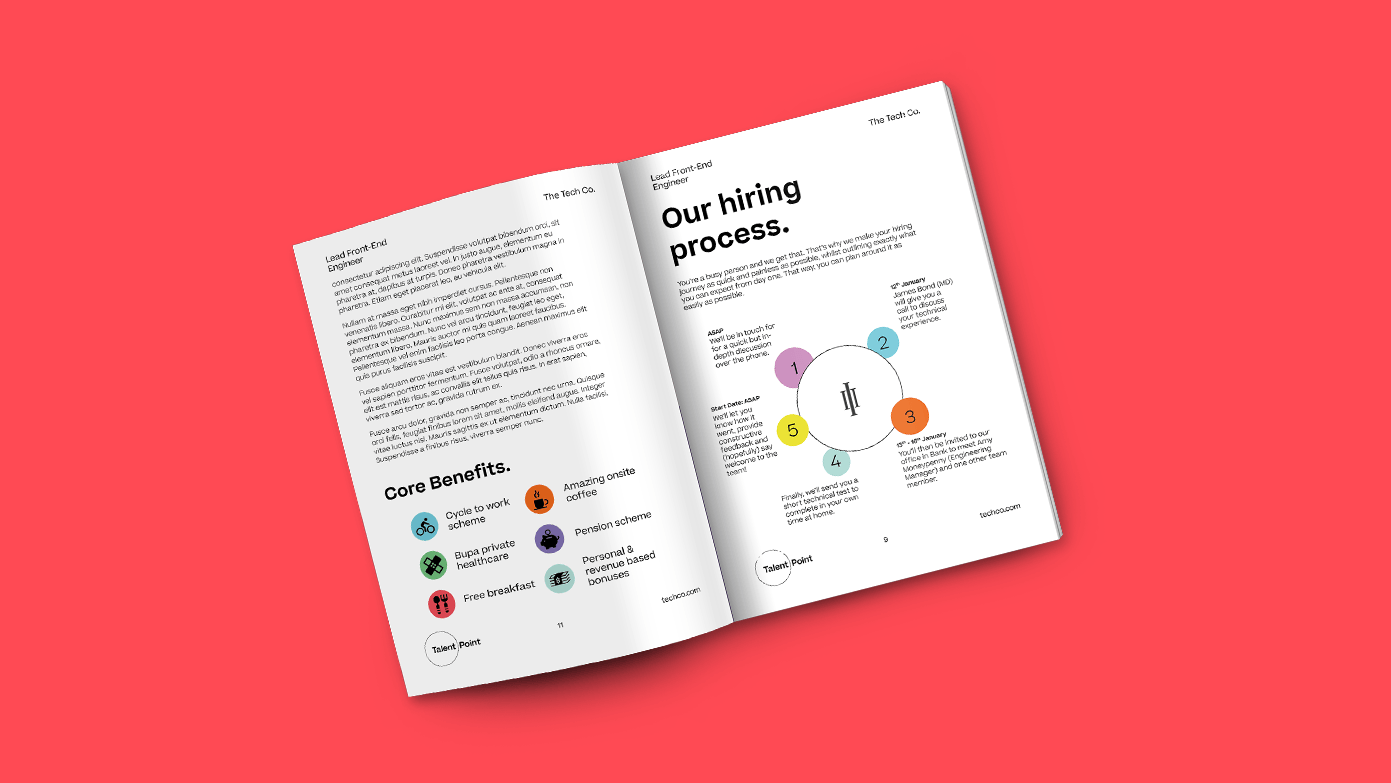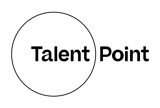Look, that's just a fact. Job descriptions are dull to read, dull to write, and dull to look at. They're almost always made up of blocks of black words on a white page, the text squeezed onto a single A4 side (even though no one is ever going to print one off), with as many buzz words and marketing speak as can be jammed in. And then there are the bullet points; you'd think Google had some secret SEO magic for bullet pointed text by the way we put everything into bullets on a job description.
The results are readable, they may even get the majority of your message across, but they aren't enjoyable. No job seeker thinks to themselves: "whoopee, I get to read some more job descriptions today!" No one fondly remembers the JD that they scanned through last week – I bet you can't even remember what the job description looked like for your current role?
Now you may be thinking "so what?" Why does it even matter if job descriptions are boring? After all, people still apply to them; they don't need to be beautiful, they just need to be functional. Sure, you're not wrong, by their very nature job descriptions are functional documents, and they definitely should prioritise information delivery over aesthetics, humour, or anything else.
On the other hand, though, a job description is often the first point of contact a job seeker has with your brand. It doesn't matter whether they find your open role on a jobs board or your own company careers page, they're statistically most likely to land on it directly from a search query, either through Google or a jobs aggregator like Indeed or JobisJob. That means your job description is also your cold open, your chance to impress on the jobseeker that yours is a company worthy of their time, investment, and skills. That reality transforms a JD from more than just a functional document: it's a core piece of marketing, a significantly important landing page, and an integral part of your employer brand.

Your Worth is Your Employer Brand
We've just mentioned it, so it's probably worth quickly reviewing what an employer brand is (and why it's so important). Whilst the term was first coined in the early 1990s, it's really begun coming into its own in the past few years. The main reason for that sudden proliferation is simple: more companies are finding it harder to hire than ever before.
The UK is currently experiencing record levels of employment, whilst our uncertain future relationship with the EU is creating a skills "brain drain" resulting in 75% of tech workers willing to leave the UK for better jobs. The tech sector already has a long history of having to battle a skills gap, which means these added pressures are only going to make finding top talent even more difficult.
To combat these issues, companies are beginning to invest heavily in their employer brand, ensuring that they are perceived positively by both job seekers and internal staff. Your employer brand is one third company culture, one third marketing, and one third HR, all bundled together to create an "employer value proposition" which boosts applicant attraction, engages job seekers more successfully, and ensures staff are retained for longer.
So, About Those Job Descriptions
Which all brings me back around to job descriptions. Any marketer will tell you that customer touchpoints are important, but the first time someone interacts with your brand, well, that's absolutely critical. We're all pretty fickle, whether we mean to be or not, which means first impressions seriously count. Sure, the marketing funnel does work (the idea that you can slowly build your reputation in a potential customer or applicant's mind via repeated exposure), but it's most effective when you're already viewed in a positive light, no matter how marginal that positivity is.
So if your job description is that first point of contact, that first mission-critical moment of brand recognition, it's probably worth investing a little more time in. Get your job description right and it'll make your hiring much easier in the long run.
The main aspect to consider is that the primary audience for a job description is not the Google SEO overlords, but the job seekers you're trying to attract.
After all, it doesn't matter if you're attracting hundreds of views if they're all from people who wouldn't be interested in the role or who aren't relevant to your business needs. That's just a waste of everyone's time (and a pretty negative first impression). On the other hand, if the ideal applicant does find your JD, you want to hook them ASAP. Here's how:
Paint a picture
Attract. Engage. Retain. Those are the three magic words to anyone working in hiring. Your job description should have elements of all three baked in, but the big focus is on engagement. Don't forget: this is your opportunity to really sell your company, to make the role exciting, and get people to hit apply.
In order to do that, you need to be open, honest, friendly, and informative. Don't go too heavy on technical terms and definitely leave out the marketing gibberish. Instead, try to give a detailed overview of what life will be like working for you. Discuss the team structure, explain how reporting lines will work, talk about the projects that have been recently completed, and review what's coming down the pipeline.
Give a clear overview of what tools, technologies, languages, or working practices are in place, but don't forget to explain why they're in use as well. You shouldn't be writing War and Peace but outlining the business reasons behind your decisions go a long way to showing potential applicants how you work and what kind of working culture likely exists.
Speaking of culture, if you have company values or a mission statement, try to work those in. You can be blunt about them if that's your style, or simply try to weave key words into how you describe the office or company. Language is powerful and should be utilised fully, so think about the job description as a narrative and craft it to make someone want to read on.
Sweat the details, honestly
Applicants don't like surprises during a hiring process and they definitely don't want them once they've accepted the job. Whilst you're busy painting that picture, try not to shy away from either the small things that will really help someone get to know you, or the slightly hard truths. If you're at a stage of development where people are working long hours, say so. Do you have legacy tech that will need supporting? A particularly unusual team structure that some people find difficult? Be upfront and address them fairly in the JD. Yes, it will turn some people away, but they would have dropped out or quit at a later stage anyway so you're just saving time in the long run.
At the same time, make sure the full hiring process is clearly outlined. If you have multiple stages, say so in the job description and, if possible, explain why and what will happen during each one. If you can, include names and job titles to provide a human element to pre-interview preparation. This is particularly important if you are expecting a potential hire to take part in technical exercises, either during an interview or in their own time. In general, people don't enjoy tech tests or presentations, and springing them on people midway through a process often results in drop-outs and ghosting. Being open about what a hiring process involves ensures applicants are committed from the moment they hit apply and prevents irritation later on.
Finally, mention the small things that can really make a mental image come to life. Where is the easiest tube station to get to from the office? What's the best place for lunch nearby? Where do people grab a drink after work? When are most of the team in the office? Has someone on your team spoken at a meetup? Small, throwaway details about all the stuff that surrounds day-to-day work speak volumes and can convert someone from thinking "that sounds like a decent job" to "I need to work at this company".
Review those requirements.
What do you actually need from a new hire on day one? Are you asking for too much compared to similar roles on the market? Do the skills you've listed make sense given how you've explained the role? These are all important questions and answering them can help guide the right people to apply, as well as making your job description more transparent and succinct. That last thing you want is to create a job description that excludes your ideal applicant through seemingly irrelevant requirements.
Speaking of which, get rid of "nice to haves" and arbitrary measures of experience. All a sentence about how "x skill would be nice to have" will do is turn people away from applying. Ditto for flatly requiring someone has "y years' of experience" with something. These behaviours are common place, but they hurt your chances of finding top talent.
To understand why, let's look at two scenarios. In the first, you have an applicant who matches every single technical requirement, has a great personality that would clearly gel with your team, and is incredibly ambitious. In fact, they're so ambitious that in their first year in the relevant field they successfully launched a greenfield project and began taking on minor mentoring duties, whilst constantly learning new skills in their own time.
Sounds great, right! Unfortunately, you set a core requirement on your job description as "Must have 3 years' experience", so they applied somewhere else. Instead, you ended up hiring someone with decent technical skills that has coasted for five years in a previous role without gaining any significant new responsibilities. Sure, they can do the job, but the potential for innovation and leadership you just lost was huge.
In another scenario, you're looking for a Lead Engineer. Luckily, one has just landed on your job description and is loving what she's reading. Scanning down the list of requirements, she mentally ticks them all of in her head: "Node? Check! Agile champion? Darn right I am! Happy to mentor? Love it!". Then, at the bottom of the list, you've written "Ideally, you should have experience using the Testatron 3000 suite". She's never used it, never even heard of it. "Oh well", she thinks, "No point applying". You'll never even know that it happened.
These types of statements become blockers to hiring, so just remove them. If you've written a detailed, realistic outline of the role and team, you've probably already mentioned all of those "nice to haves" anyway. Shifting them out of the requirements even has a second benefit of turning the statement into a positive regardless of where an applicant falls. Either they see it and think "hey, I can already do that" which makes them feel more confident; or it turns into a potential skill gain. Win-win, right!
Back to the future
A really great job description must include long term details. What skills will the applicant gain? Where might the role take their career? Are there any projects which the role will be involved with in the next 6, 12 or 18 months? These types of questions are important to consider but often get forgotten. After all, in most situations you're hiring to fulfil an immediate business need, so that's what the JD focuses on.
The problem is – particularly in a saturated employment market like tech – job seekers simply aren't on that wavelength. Yes, some applicants will be looking for immediate work, but many will already be employed and simply searching for a new direction, the next step in their career, or to find a job that can offer them specific skills development. As covered in our State of the Tech Hiring Market 2020, career opportunities and personal development are frequently cited as top priorities for job seekers, often ahead of salary and other benefits, so your job description needs to shout about them.
Targeting applicants that are looking to grow into a role has practical business benefits as well. People that see a clear future within a team or company are much more likely to stay in that business for longer, and L&D packages, training, or simply exposure to new technologies can all be hugely impactful on retention. Better yet, if you have clear career paths or promotion structures in place, make sure you outline them. Being able to imagine how you will have grown and where you might be in a year's time are powerful tools for engaging with job seekers.
A Brief Look At Our Structure
Incidentally, we’re not just preaching blindly – we live by these rules. They’re at the heart of our Campaign Briefs, a formula we’ve been perfecting for several years at this point (and continue to evolve based on feedback from both applicants and hiring managers). Every job description should be micro-targeted, a veritable love letter to the perfect applicant, crafted to instantly engage and excite the ideal person to meet the role’s requirements. If it isn’t doing that, it’s missing a trick.
The Campaign Brief Alan had prepared was by far the best and most detailed description of a role/organisation I have ever seen. The support given was truly invaluable in giving me the best chance at success. Nabhag Dave, Senior PMO Analyst @ dnata
That’s what Campaign Briefs do. They’re built off in-depth interviews with Hiring Managers and relevant individuals within each company, allowing our Writers to paint a vibrant, realistic picture of what the role and working environment will be like. Those insights are matched up with business needs and reviewed against the latest market data to ensure that the skill requirements, seniority, pay, and career benefits being outlined are both in line with the company’s goals and meet the expectations of those applicants we most want to attract.
Each Brief follows a distinct format, including a huge amount of information on the company and team, reporting lines, benefits packages, L&D opportunities, the role’s responsibilities and, of course, the necessary skills that will enable someone to truly excel. They also contain a full outline of the hiring process, including estimated dates for interview stages and mini profiles on the people that the applicant will meet.
The final result is long, often four or more pages, but it gives applicants complete transparency and ensures anyone going in for an interview is both bought into the role and knows exactly what to expect. Briefs also give Hiring Managers confidence in the people being put forward, as well as providing a useful template for interview questions.

